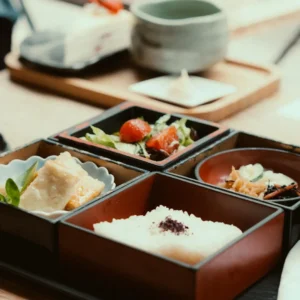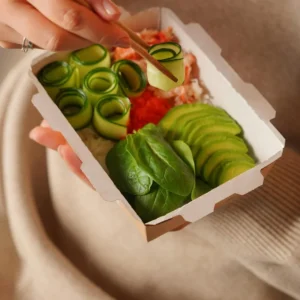Bento Boxes UK | The Art of Everyday Japanese Lunch
Discover the beauty, balance, and nutrition of bento boxes in the UK. Learn how Japan’s iconic lunch culture inspires healthy eating. They represent balance, culture, and creativity in Japanese daily life. Each box carries flavour, nutrition, and artistry in a small but carefully designed format. For many, preparing a bento is an act of care and expression. At the same time, eating one becomes a joyful ritual.
The Origins of Bento
 The word “bento” comes from a term meaning “convenient.” Centuries ago, Japanese workers carried rice balls wrapped in leaves. Over time, this practical lunch evolved into a true art form. Today, bento boxes showcase the essence of Japanese cooking: simple, balanced, and beautiful.
The word “bento” comes from a term meaning “convenient.” Centuries ago, Japanese workers carried rice balls wrapped in leaves. Over time, this practical lunch evolved into a true art form. Today, bento boxes showcase the essence of Japanese cooking: simple, balanced, and beautiful.
From Fields to Cities
Farmers once needed portable meals in the fields. Later, students and office workers in busy cities carried bentos to school or work. This tradition still continues. Yet modern bento designs now reflect changing lifestyles while keeping strong ties to heritage.
Beauty in Presentation
The Japanese value the way food looks as much as how it tastes. Therefore, presentation plays a key role in every bento. Colour, shape, and layout matter as much as flavour. A well-arranged box brings delight even before the first bite.
Balance of Colours
A traditional bento includes five colours: red, green, yellow, white, and black. Each hue adds beauty and nutrition. For example, red may come from tomatoes, green from spinach, and yellow from tamago omelette. This rainbow effect pleases the eyes while ensuring a variety of nutrients.
Shapes and Textures
Bento makers often cut vegetables into flowers or stars. Rice may appear as neat balls or fun shapes. Moreover, crunchy pickles sit beside soft rice, offering contrast and surprise. These details make each meal both playful and satisfying.
Nutrition Packed with Care
Bento boxes balance taste and health. They usually contain rice or noodles, vegetables, protein, and fruit. This mix ensures energy, vitamins, and variety in every meal.
Small Portions, Big Variety
Instead of one large dish, bentos hold many small servings. This style prevents overeating while still offering fullness. Furthermore, the variety makes every bite exciting. One mouthful may be savoury salmon, the next sweet orange.
Seasonal Ingredients
Japanese cooks value the seasons. Therefore, bento menus change with time. In spring, cherry-blossom rice might appear. In autumn, mushrooms and chestnuts bring warmth. Seasonal produce keeps meals fresh and meaningful throughout the year.
Bento Boxes UK: Everyday Art and Nutrition
 For many families, making a bento is an expression of love. Parents prepare them for children with fun designs. Workers carry bentos from home or buy them at stations. In every case, the box connects people to tradition and care.
For many families, making a bento is an expression of love. Parents prepare them for children with fun designs. Workers carry bentos from home or buy them at stations. In every case, the box connects people to tradition and care.
Kyaraben: Character Bentos
Some parents create “kyaraben,” or character bentos, shaped like cartoon heroes or animals. These bring joy to children’s lunches. Although playful, they still respect the rules of balance and nutrition.
Ekiben: Station Bentos
Travellers enjoy “ekiben,” or bento sold at train stations. Each region showcases its local foods. For example, a station near the sea might offer seafood, while a mountain town serves wild vegetables. Ekiben highlight the diversity of Japan’s culinary map.
Bento Boxes UK in the Modern World
Today, bento culture spreads worldwide. People see it as both practical and inspiring. Cafés and restaurants outside Japan now serve creative bento boxes. At the same time, social media has boosted interest, with countless photos showing colourful lunch ideas.
Healthy Eating Trend
Many people adopt bento-making to control portions and eat healthier. The format encourages variety and moderation. It also reduces food waste, since small servings use leftovers smartly.
Sustainability and Style
Reusable bento containers reduce single-use packaging. In addition, stylish designs make meals appealing. Some boxes are wooden, others plastic, while modern versions include eco-friendly materials. Thus, the bento reflects both tradition and current values.
Final Thoughts
Bento boxes represent much more than food. They express beauty, balance, and cultural pride in every meal. Moreover, they promote nutrition, creativity, and joy in daily life. Whether simple or elaborate, a bento reflects thoughtfulness in every detail.
From Japan’s farms to its cities, from classrooms to train stations, the bento remains an icon of everyday artistry. As it continues to inspire people worldwide, this humble box proves that food presentation can be both practical and poetic.



